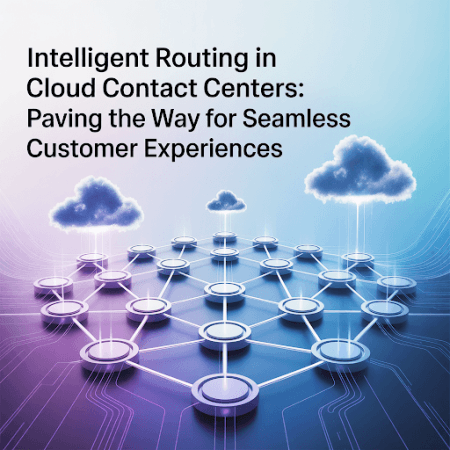
In this digital world, Gokulkumar Selvanathan highlights the transformative journey of the contact centers. Once seen as back-office cost centers, they now lead customer engagement strategies. Innovations in intelligent routing drive this shift, ensuring seamless, efficient interactions. With digital channels comprising nearly half of customer engagements and rising, contact centers must embrace smarter routing frameworks to sustain service quality across increasingly diverse interaction platforms.
Building Blocks of Intelligent Routing
At the heart of these systems are three core elements:
- Skill-Based Distribution: Matching customers with agents possessing the most relevant expertise.
- Queue Prioritization: Dynamically adjusting customer positioning based on value metrics and service level agreements.
- Data-Driven Flow Control: Integrating routing decisions with real-time business intelligence, drawing from CRM data, interaction histories, and operational metrics.
Such an architecture not only improves average handle times but also drives superior outcomes in first contact resolution and customer satisfaction.
Data as the Driving Force
Modern intelligent routing leverages real-time data customer histories, interactions, and contextual signals to dynamically adjust to evolving needs. Top contact centers achieve lower call handling times and abandonment rates using predictive analytics.
Machine learning algorithms analyze large datasets to anticipate customer needs and recommend optimal routing paths. This proactive model replaces reactive service, advancing personalized, anticipatory customer engagement across contact center operations.
The Engine Behind the Logic
Sophisticated decision trees and rule engines underpin intelligent routing frameworks, evaluating multiple variables for seamless omnichannel experiences. User-friendly graphical interfaces now allow business users to modify routing strategies easily, boosting agility.
Scalability is paramount; cloud-based architectures offer horizontal scalability to maintain performance during demand spikes. API integrations enhance routing intelligence by linking with CRM, knowledge management, and analytics platforms, driving smarter, more responsive customer interactions.
The Rise of AI-Powered Routing
Artificial intelligence is revolutionizing routing by analyzing customer data and past interactions to create personalized experiences. Natural language processing (NLP) identifies customer intent early, enabling accurate routing without explicit input.
These AI-driven systems dynamically adjust to real-time operational changes such as spikes in call volume or staffing shifts ensuring consistent, high-quality service delivery under varying conditions.
Orchestrating the Customer Journey
Journey orchestration transforms customer engagement by managing interactions across all channels as a cohesive journey. By integrating routing with CRM and marketing platforms, contact centers personalize interactions based on complete customer histories. Predictive journey analytics enhance this by forecasting customer paths and dynamically adjusting routing, ensuring seamless, proactive, and satisfying experiences throughout the customer lifecycle.
Finding the Human Touch
While automation handles the majority of interactions, successful implementations strike a careful balance between technology and human oversight. Supervisors retain the ability to intervene in complex scenarios, ensuring that nuanced customer needs are met with empathy and expertise. Continuous monitoring and real-time dashboards allow for rapid adjustments, ensuring routing strategies evolve in tandem with operational realities.
Measuring What Matters
Performance analytics is emerging as a crucial component of intelligent routing. Moving beyond traditional metrics, AI-enhanced measurement frameworks now evaluate the contextual appropriateness of routing decisions, incorporating semantic analysis and customer effort scoring. Comparative benchmarking against industry standards further drives continuous improvement.
A Culture of Continuous Improvement
Sustaining excellence requires disciplined, ongoing improvement. Structured feedback from customers, agents, and supervisors ensures comprehensive routing insights. Cross-functional collaboration fosters practical, robust solutions. Adaptive frameworks with self-learning systems continuously analyze interactions and adjust routing in real time, dynamically aligning with evolving business priorities.
In conclusion, Gokulkumar Selvanathan, intelligent routing is no longer a mere technical function, it is a strategic asset that shapes customer journeys and business outcomes alike. In an era of proliferating channels and rising expectations for personalized service, the organizations that treat routing as a living, continuously evolving capability will stand out in the competitive landscape.









